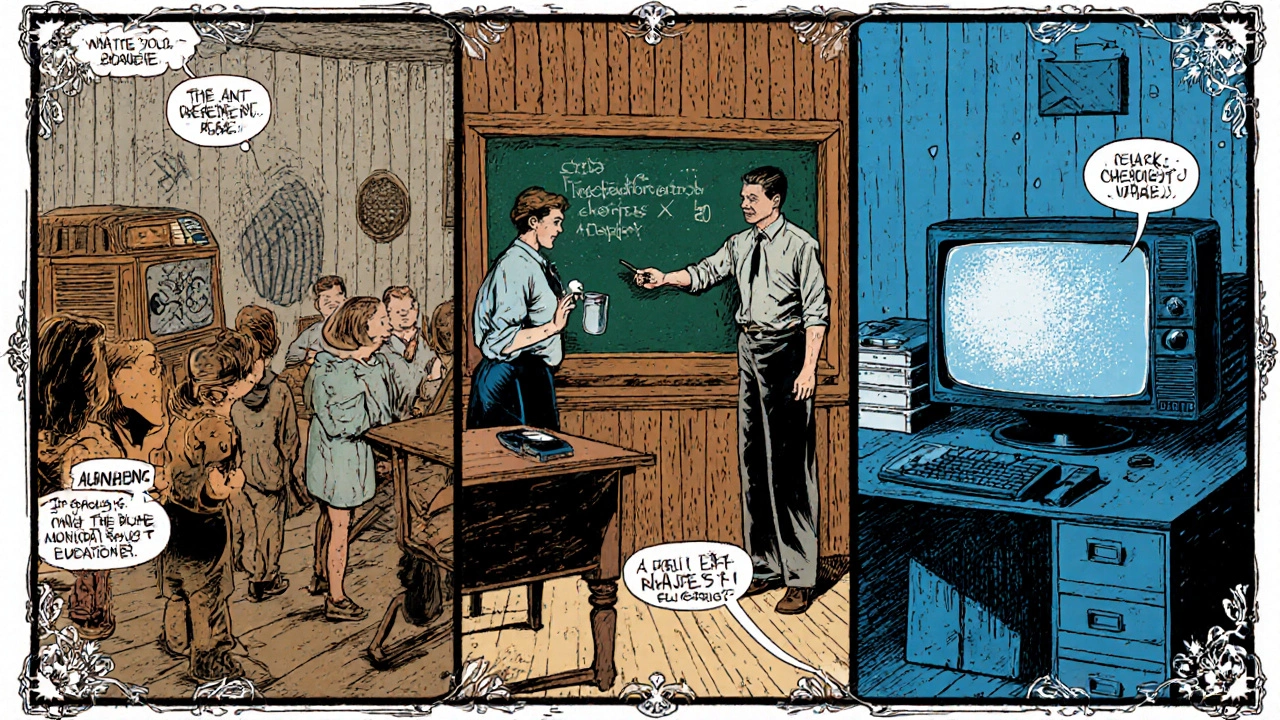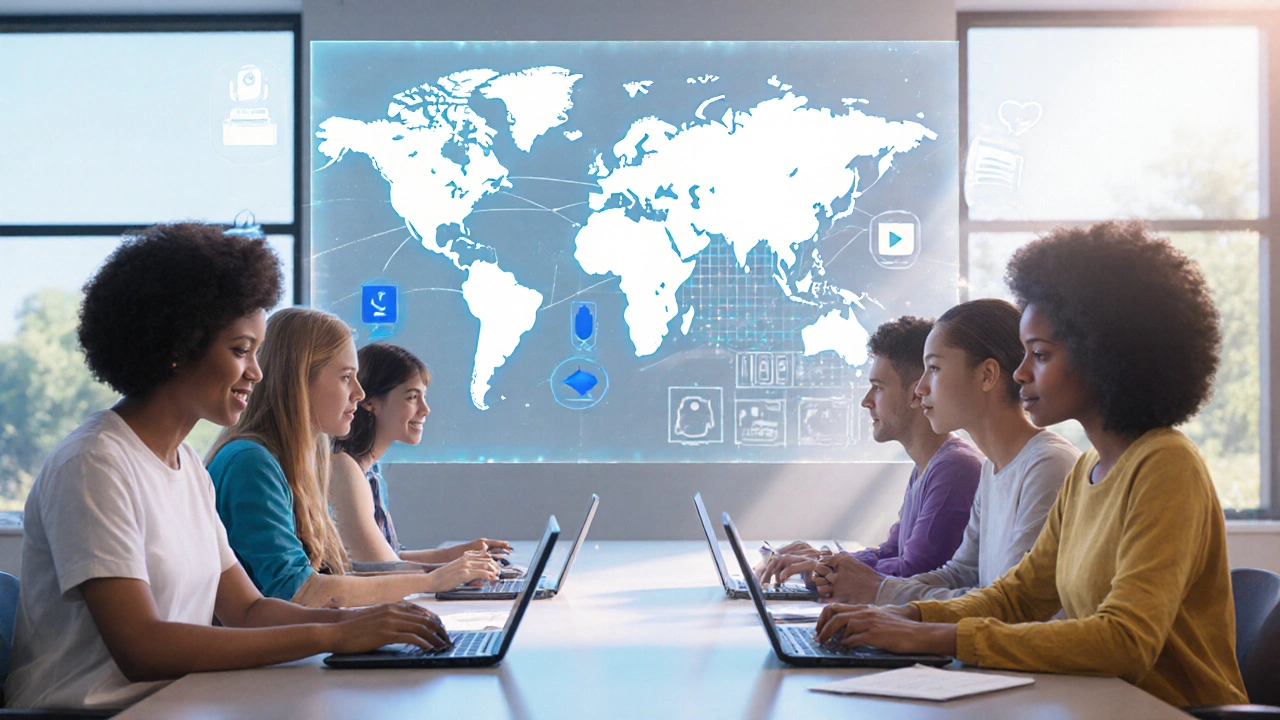Distance Learning Timeline Explorer
Each technological advancement built upon previous methods:
- Correspondence: Self-paced, written communication
- Radio: Real-time audio instruction
- Television: Visual demonstrations
- Internet: Interactive digital platforms
- MOOCs: Scalable global access
- COVID-19: Rapid institutional adaptation
Distance learning has evolved from isolated study to connected global education:
- Increased accessibility to education
- Reduced geographical barriers
- Enhanced learning through multimedia
- Scalability for mass enrollment
- Adaptation to crisis situations
Key Takeaways
- Distance learning dates back to the 19th‑century correspondence courses.
- Radio and TV schools expanded reach in the 1920s‑1950s.
- The internet turned “remote learning” into a mainstream option in the 1990s.
- MOOCs popularized massive, low‑cost online classes after 2012.
- The COVID‑19 pandemic accelerated institutional adoption of online platforms.
People often wonder when distance learning started. The short answer is the mid‑1800s, but the story stretches across several media, each reshaping how we learn without being in the same room.
What is Distance Learning?
Distance learning is a formal education method that delivers instruction to learners who are not physically present in a traditional classroom. It can use printed materials, audio‑visual broadcasts, or digital platforms to bridge geographic gaps. The goal is the same as any schooling-knowledge transfer-but the delivery channel varies.
Early Roots: Correspondence Courses (1840s‑1900s)
The first organized distance programs emerged in the United Kingdom and the United States. In 1840, the University of London launched External System, allowing students to study by mail and sit local exams. By the 1890s, American universities like Columbia University offered correspondence courses in engineering and bookkeeping, sending textbooks and assignments via the postal service. These programs relied on printed syllabi, handwritten essays, and delayed feedback-sometimes weeks per cycle.
Radio Instruction: The Airwaves Classroom (1920s‑1940s)
When radio became a household staple, educators seized the opportunity. In 1922, the British Broadcasting Corporation (BBC) premiered its first educational series, covering subjects ranging from basic arithmetic to adult literacy. The United States followed with the University of Iowa's Radio Course in Literature in 1932, broadcasting lectures that students could hear while working on farms.
Radio’s advantage was immediacy-students could listen in real time, but interactivity remained limited to mailed question cards.
Television School: Visual Learning Takes Off (1950s‑1970s)
The post‑war boom in TV ownership opened another channel. In 1955, the U.S. Department of Education funded the Television Instructional Center (TIC), producing curricula for high school physics and chemistry that aired on local stations. Canada’s CBC launched School of the Air in 1958, serving remote Indigenous communities with daily lessons.
Television added visual demonstrations-think chemistry experiments you could actually see-making abstract concepts clearer than radio alone.
Internet‑Based Learning: The Digital Turn (1990s‑2000s)
The World Wide Web changed everything. Early adopters like the University of Phoenix began offering fully online degree programs in 1994, using email, HTML pages, and primitive discussion boards.
By 1999, Moodle and Blackboard introduced the first Learning Management Systems (LMS), providing course catalogs, gradebooks, and forums in a single web portal. This era also saw the rise of OpenCourseWare from MIT, offering free lecture notes and videos.

Massive Open Online Courses (MOOCs) and Global Scale (2012‑present)
2012 marked a watershed: platforms like Coursera, edX, and Udacity launched to the public, delivering courses from top universities to anyone with an internet connection. These MOOCs leveraged video lectures, auto‑graded quizzes, and peer‑review assignments, allowing tens of thousands of students to enroll simultaneously.
Data from the 2023 Global E‑Learning Report shows that MOOCs attracted over 300 million registrations worldwide, highlighting the scalability of modern distance learning.
COVID‑19 Pandemic: Accelerating Remote Education (2020‑2022)
When the pandemic forced schools to close, distance learning went from optional to mandatory. Platforms like Zoom, Microsoft Teams, and Google Classroom saw daily active users jump from millions to over 200million globally.
Institutions rapidly upgraded their LMS, added synchronous video sessions, and invested in digital assessment tools. The crisis also exposed inequities-students without broadband struggled-prompting governments to fund connectivity programs.
Timeline of Milestones
| Year | Milestone | Key Impact |
|---|---|---|
| 1840 | University of London External System | First formal correspondence degree program. |
| 1922 | BBC launches educational radio broadcasts | Brings real‑time lessons to rural listeners. |
| 1958 | School of the Air (Canada) | Uses TV to teach isolated northern communities. |
| 1994 | University of Phoenix goes online | Early fully internet‑based degree offering. |
| 1999 | Launch of Moodle and Blackboard LMS | Standardizes digital course management. |
| 2012 | MOOC platforms (Coursera, edX) debut | Scales education to millions worldwide. |
| 2020 | COVID‑19 forces global remote learning | Accelerates adoption of video‑conferencing tools. |
How the Past Shapes Today’s Practices
Every technology added a new layer of interactivity. Correspondence taught self‑discipline; radio introduced timed delivery; TV added visual cues; the internet blended both with instant feedback. Modern LMS combine video, quizzes, analytics, and AI‑driven personalization-capabilities that would be impossible a century ago.
Understanding the lineage helps educators choose the right mix. For instance, a corporate trainer might blend short video clips (TV legacy) with LMS‑tracked assessments (internet era) to mimic classroom pacing.
Common Misconceptions About Distance Learning’s Age
- Myth: Online education started with the 2000s boom.
Fact: Its roots are 180‑year‑old correspondence courses. - Myth: Radio/TV lessons were just “TV schools”.
Fact: They were government‑sponsored public‑service programs aimed at adult literacy. - Myth: MOOCs replaced traditional universities.
Fact: They supplement, not replace, and many credit‑bearing programs still rely on campus‑based assessment.
Next‑Step Checklist for Learners and Educators
- Identify your goal: credential, skill upgrade, or personal interest.
- Match the delivery mode to your schedule-self‑paced (correspondence style) or instructor‑led (live video).
- Check platform credibility: look for accredited partners or verified certificates.
- Ensure reliable internet or alternative access (downloadable PDFs, radio archives).
- Set up a dedicated study space to mimic the classroom focus that early distance learners cultivated.

Frequently Asked Questions
When did the first distance learning program start?
The University of London’s External System, launched in 1840, is widely recognized as the earliest formal distance learning program.
How did radio courses work before the internet?
Listeners tuned in to scheduled broadcasts, took notes, and mailed completed assignments to a central office for grading. Feedback could take weeks.
What’s the difference between MOOCs and traditional online degree programs?
MOOCs are usually free or low‑cost, open‑enrollment courses that may offer a certificate, while traditional online degrees require tuition, have admission criteria, and confer accredited qualifications.
Did the pandemic permanently change higher education?
Yes. Surveys from 2023 show that 68% of universities now plan to keep at least one fully online program, and many have permanently integrated hybrid classroom models.
Are there affordable ways to access high‑quality distance learning?
Many institutions offer free open‑courseware, and platforms like Coursera provide financial aid for paid certificates. Public libraries also host legacy correspondence materials that can be borrowed.
